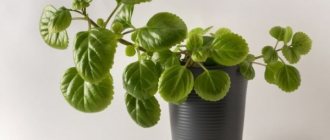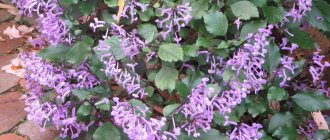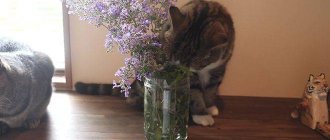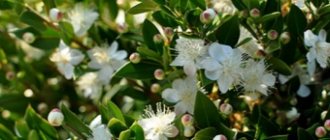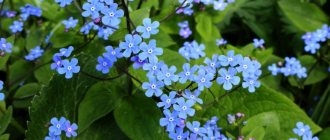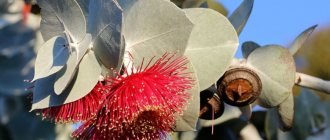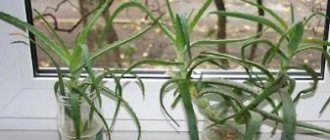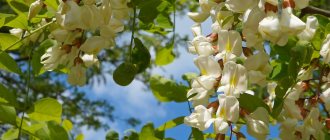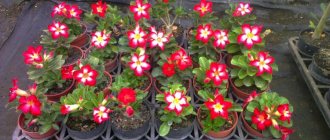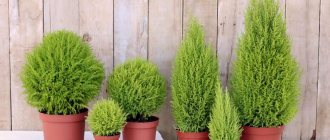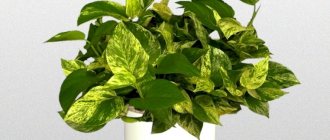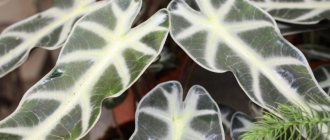- coleus-shaped;
- Australian;
- shrubby;
- Ernst;
- Fragrant.
Our compatriots often call it spur flower, flycatcher, and indoor mint. For decades now, this exquisite and delicate flower has attracted special attention from flower lovers. And the beneficial and harmful properties of plectranthus evoke unprecedented admiration.
Unique varieties of the plant, such as French thyme, Indian borage, Cuban oregano, soup and Mexican mint, are widely used in cooking.
Varieties
Plectranthus shrubby
Capable of growing to impressive sizes. Its monochromatic leaves are heart-shaped. The main feature of the plant is the subtle aroma of essential oil.
If you mash the leaf, the smell becomes much more intense. This pleasant smell repels insects, including house moths. Therefore, plectranthus fruticosa is often called the moth tree.
Ernst caudex
It looks like a tree; the plant accumulates moisture in the lower part of the trunk.
Felt
It is also an unpretentious plant; it can be grown with equal success both indoors and outdoors. Of course, it grows much taller outdoors than indoors. The appearance is ampelous, the cascading branches and leaves smell of mint. At home, felt mint grows very slowly and does not reach large sizes.
Ertendaal variety
It is considered perhaps the most beautiful view. It has unusual carved leaves that have different colors. Their upper part is green and the lower part is purple-pink.
The top surface of the leaves is velvety with thin light veins. In addition to this, they smell pleasantly of camphor oil. This variety is the most popular among gardeners.
Plectranthus whorled
Similar to the Ertendahl variety, it can often be seen on window sills.
Plectranthus coleus
It also has very peculiar variegated leaves. They are large, bordered with a cream or white stripe. The stems grow strictly vertically.
Hybrid Mona Lavender
Perhaps the most extravagant look. It begins to bloom in early September. How does plectranthus bloom? Very long and dense inflorescences of bluish-violet tubular flowers form on its straight stems.
There are blue specks on the surface of the petals. The stems themselves are brown in color. The leaves of this hybrid are large and oval in shape. On the lower surface of each leaf there is a purple fluff, and the upper surface is glossy.
— The Madagascar variety is beautiful.
A close encounter with an exotic plant
Plectranthus aromatica is a perennial herbaceous plant of a ground cover or climbing nature. It has thin stems covered with small, fleshy leaves. The plates are painted bright green and slightly pubescent. Some species have a white border near the carved edges of the foliage. The flower has a pleasant aroma that resembles mint or cut meadow grass. During flowering, miniature bell-shaped buds of the following colors are formed on the plectranthus:
- pink;
- white;
- lilac;
- purple.
They are collected in raceme inflorescences, which look original among the lush greenery.
To prepare medicinal raw materials, the tops of the shoots, which have several leaves, are plucked off. This is best done during dry periods when there is no moisture on the plant.
Useful properties of homemade mint
It is absolutely certain that indoor mint plectranthus has very diverse beneficial properties. The leaves, stems and flowers of plectranthus are saturated with fragrant essential oils. Their smell repels insects, including house moths. If this flower grows in the room, then this insect will never appear in woolen carpets. You can also protect clothes in your wardrobe from moths by placing a small bag of dried flowers or plant leaves in it.
But is it possible to eat plectranthus? Yes, the leaves and flowers of the plant can be used in cooking as a natural flavoring. Add them to any dishes, marinades, sauces, drinks. This will only make their taste more pleasant. In addition, different types smell differently. Some smell like mint, others smell like thyme or smell like oregano.
Plectranthus mint also has a number of medicinal properties that have long been used in folk medicine. Is it possible to brew leaves? Need to! Tinctures, decoctions and aromatic teas made from peppermint are an excellent sedative.
If you apply a compress of these remedies to your temples, the headache quickly goes away. The juice of the leaves heals the throat, promotes rapid healing of wounds and insect bites. Tinctures and decoctions of this plant quickly suppress any inflammation in the oral cavity.
You can add a decoction of plectranthus flowers and leaves to water and take restorative baths. The plant is also used in the preparation of cough medicines and diuretics.
Transfer
After purchasing a plectranthus, be sure to transplant it into a new, larger pot. Carefully remove the plant from the store container without destroying the earthen ball, place it in a new pot and add soil.
In the future, the plant will be replanted annually for at least five years. Replant in early spring. Replant an adult plant as needed, when it becomes crowded in the pot. Adult mint bushes can be transplanted into open ground for the summer. Be sure to return it indoors before the first frost.
It is advisable to grow Plectranthus in soil, the composition of which you prepare yourself. To do this, take two parts of turf soil, one part of humus and leaf soil, and half of each sand and peat. Mix all these components thoroughly until a homogeneous mass is obtained. The resulting soil should be moderately loose.
Feed homemade mint only during the period of active growth and flowering once a month, not more often. In winter it does not need feeding. Moreover, it is harmful to the plant. Fertilize the soil alternately with organic fertilizers and mineral fertilizers.
Watering and air humidity
Mint grows quickly and pleases with large flowers. For this, the plant, especially the flowering one, requires a lot of moisture. In the period from early spring to mid-autumn, water it often, abundantly, without allowing the top layer of soil in the pot to dry out.
It should be said that the flower, especially the caudex type, is able to survive short-term drought even if the entire earthen clod dries out completely. However, it is not worth bringing it to this point.
On the contrary, during active growth, along with abundant watering, be sure to spray the plant with warm water at least once a day. With the onset of cold weather, reduce watering to a minimum, since at this time the plant is half asleep.
Preparation of raw materials from plectranthus
The raw material for the preparation is the leaf-covered tops of aromatic plectranthus. Medicinal raw materials of plectranthus are harvested before and during the active flowering phase, which is when the saturation of the plant with beneficial substances is highest.
Harvesting should be done on fine, dry days, when the leaves are protected from moisture. The tops are cut off with scissors and dried in the shade, since exposure to the sun is detrimental to the substances in the leaves and promotes the release of essential oils.
However, you cannot dry the plectranthus in dryers, ovens, or stoves - the plectranthus will lose all vitamins and minerals.
If the plant is dried correctly, it retains a very noticeable aroma.
Lighting, temperature
Plectranthus requires bright but diffused light. But don't leave it under the scorching rays of the sun. If you definitely want to place a pot with this flower on the windowsill on the south side of the room, then be sure to protect the plant with a screen. During short daylight hours, illuminate the bush with a neon lamp
In nature, mint grows in the shade of tropical trees, where the air temperature is low. Domestic varieties also require moderate ambient temperatures ranging from 20 to 22 degrees.
That is, at room temperature the plant feels most comfortable. At an ambient temperature of 15 degrees, leaves begin to fall. If you do not move the flower to a warmer place, it will soon die.
Pot
The size of the pot depends on the amount of mint you are growing. A container with a diameter of 14 cm is suitable for one bush. Up to 5 plants can be grown in a container with a diameter of 32 cm.
Pruning, propagation
Trim the stems in early spring. In this case, it is advisable to trim weak stems to half their length. Strong stems should not be cut; it is better to pinch them. By the way, you can pinch the stems at any time of the year. This will make the bush plectranthus thicker.
The easiest way to propagate is by cuttings. The root panicle on cuttings of homemade mint forms very quickly; after just a couple of weeks they are ready for planting in separate pots.
In this case, cuttings germinate equally quickly both in water and in wet sand or waterlogged soil. It is allowed to plant several cuttings in one pot at once. This is done to obtain a very lush bush.
Planting scheme
Cuttings
- Cuttings are cut 15 cm long.
- Planted in boxes or in the ground in a permanent place in a mixture of fertile soil and sand (2:1).
- Embed into the soil 1.5-2 cm deep, at an angle of 45 degrees. The distance between cuttings is 2-3 cm.
Find out more information about cuttings from plectranthus from the video:
Seeds
- The fertile soil is covered with a layer of sand (2cm).
- The seeds are very small. For planting, they are not buried, but mixed with fine-grained sand and scattered over the surface.
- The crops are lightly compacted and sprayed.
Rhizome
- When planting with rhizomes, maintain a row spacing of 35-40 cm. The depth of the furrow is 8-10 cm.
- The rhizome is placed on the bottom of the groove in a continuous thread, sprinkled with soil, compacted and spilled with water at room temperature.
Diseases and pests
Indoor mint is deservedly considered an unpretentious plant; with careful care it never gets sick and is not exposed to harmful insects and microorganisms. Improper care for it leads to sad consequences.
- Most often, problems arise due to excessive watering. As a result, the roots of the plant begin to rot, and the leaves begin to turn yellow and fall off. Even worse, it can cause powdery mildew on the leaves. It appears as gray spots. In such cases, sharply reduce watering and remove powdery mildew colonies from the leaves. This can be done using a soap solution or special chemicals. A solution of serum in water quite effectively cleans leaves of powdery mildew. It should contain one part whey and three parts water.
- A prolonged lack of moisture in the soil also leads to trouble. In this case, the plant begins to wither. Keep in mind that if you repeatedly bring the plectranthus to this state, then eventually resuming normal watering will no longer lead to a positive result, the plant will still die.
- In direct sunlight, the leaves fade and the mint loses its attractiveness.
If the air in the room where the plectranthus grows is too dry, and you forget to spray the plant, then it will soon become infected with spider mites, aphids or scale insects. You can only get rid of these parasites using chemicals. A soap solution will not help because the leaves are fluffy - they cannot be washed.
Growth periods (rest, flowering)
By nature, plectranthus does not need a period of rest. But you can create peace yourself. To do this, in winter you need to reduce watering and stop feeding.
Flowering usually occurs in summer. At this time, small inflorescences appear in the form of spikelets. Since flowers take a lot of energy from the crop, it is recommended to prune them.
Signs
Popular rumor ascribes to plectranthus the same properties as the money tree. That is, it supposedly helps improve the financial situation of the family. Of course, there is no scientific evidence for this yet. However, in Scandinavian countries this plant can be seen in every home.
Signs and superstitions say that mint promotes good relationships in the family, if not to say that it is a family peacemaker. Many claim that mint strengthens sleep and relieves household members of bad thoughts.
Olga Danilina
